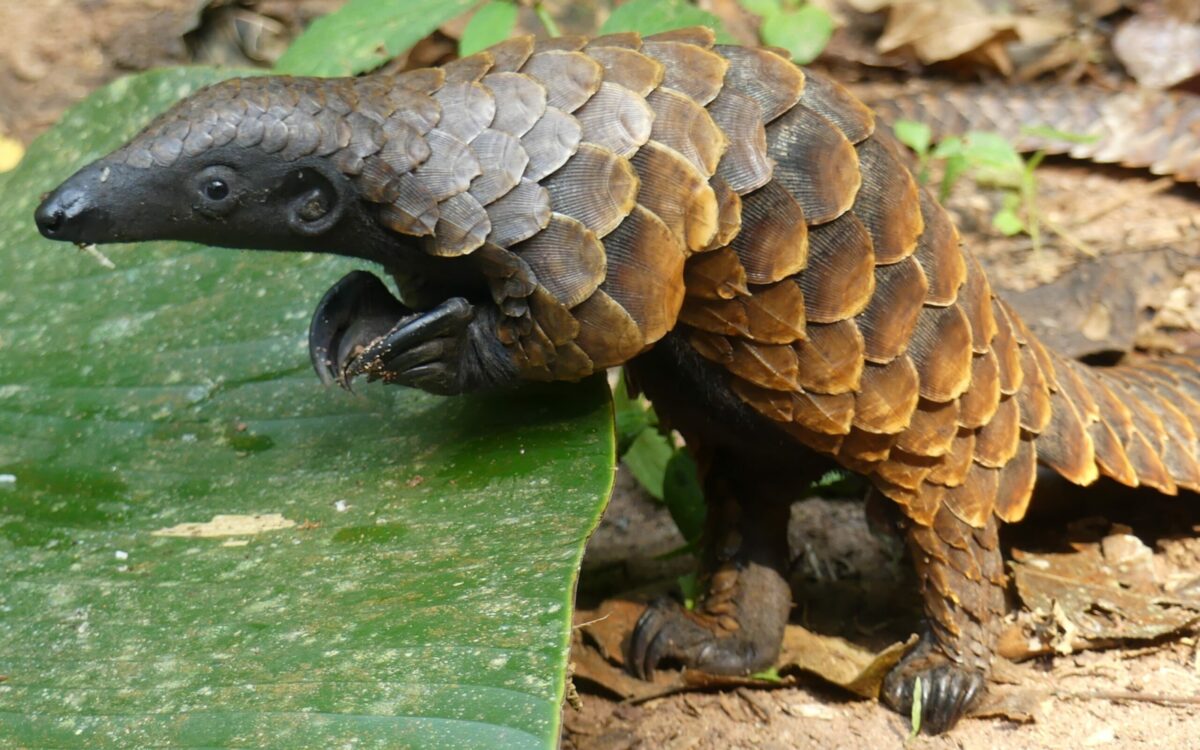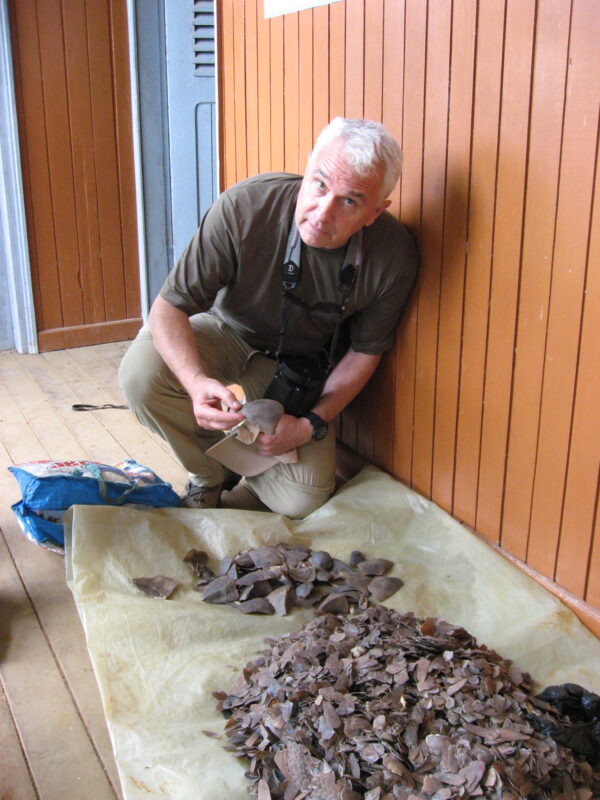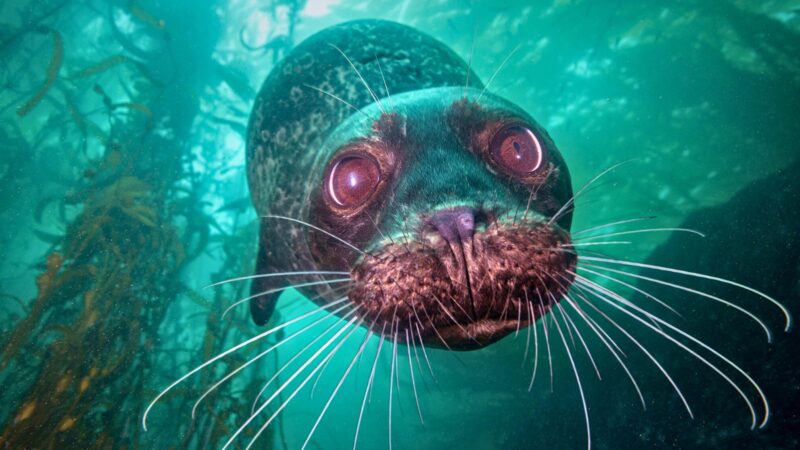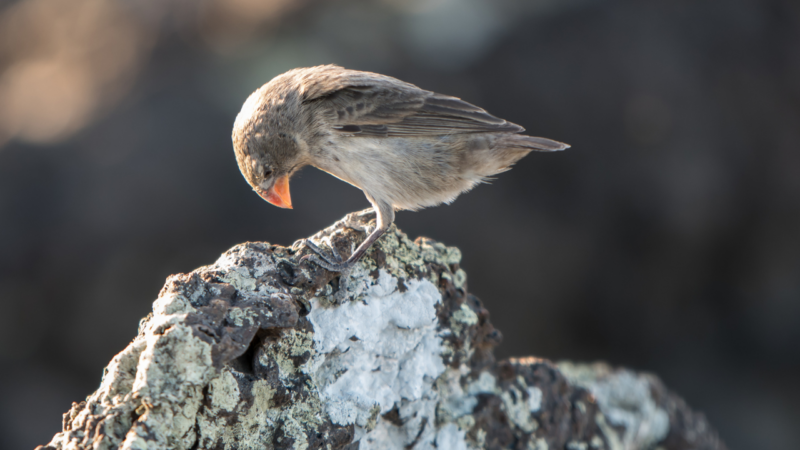
White-bellied pangolins have second-most chromosomes among mammals
Genomic research could support conservation efforts for endangered species
There’s a lot of scientists who don’t know about the pangolin — a peculiar, scaly mammal that looks like a cross between an aardvark and an armadillo.
Now, a new paper published in the journal Chromosome Research, reveals what UCLA researcher Jen Tinsman calls a “scientific surprise” that underscores how unusual the animal is.
The scientists discovered that the female white-bellied pangolin has 114 chromosomes, more than any mammal except the Bolivian bamboo rat, which has 118 — and far more than humans, who have 46. Other pangolin species have more typical numbers of chromosomes, ranging from 36 to 42.
The scientists also identified another genetic quirk. Male white-bellied pangolins have a different number of chromosomes, 113, than their female counterparts; in most species, males and females have the same number.
“There’s nothing else like them on the planet; they’re in their own order, their own family,” said Tinsman, a UCLA research fellow and co-author of the study, adding that pangolins’ closest relatives are cats and rhinoceroses.
Tinsman collaborated on the study with colleagues from UCLA and several other universities around the world, as well as zoos and research organizations. The research was undertaken to produce information about the pangolin’s genome in order to support conservation efforts — all four species of the pangolin are endangered.
One reason little is known about pangolins is that they are notoriously difficult to study. They fare poorly in captivity; only a few zoos have managed to house them successfully. In the wild, they are hard to locate, and the technology scientists use to monitor other species often fail when it comes to pangolins — the animals sometimes use trees to rub radio tags from their scales.
What researchers do know about the animals is that they dig and use their long tongues to eat ants, termites and other insects. Some species, including the white-bellied variety, live in trees, hanging from trunks and branches. Others live in burrows. When threatened, pangolins curl into a ball. (Lions have been known to bat them around, unsure what else to do with them.)
The white-bellied species is relatively small, weighing in at three or four pounds and measuring less than a foot long, while some ground pangolins grow to 80 or 90 pounds, about the size of a large dog.
Aside from its scientific value, the research created a valuable genetic resource to support conservation efforts, especially attempts to control poaching, which is the primary reason the animals are endangered. Pangolins’ scales are sold illegally on international markets for use in traditional medicine from Nigeria to China. They’re also hunted as a food source — locally as bush meat, for which they sell for the equivalent of about $10 each, or for exotic meals in distant regions, for which they can fetch over $1,000 on international markets.
“I’ve seen pangolin scales trafficked alongside guns, fake IDs and drugs,” Tinsman said. “The problem extends all the way up to major international crime syndicates.”
Using genomics could help identify which species of pangolin are the sources for products derived from the animals. And the information could help conservationists and researchers understand differences within a species whose habitats cover 6 million square kilometers (2.3 million square miles) and 23 countries.

“Understanding chromosomes and the structure of genes is important for conservation,” said Ryan Harrigan, an adjunct professor at the UCLA Center for Tropical Research and a co-author of the paper. “It can determine how we manage populations — if you found big genetic differences between two groups, you might manage them differently.”
“This paper is a great example of how a study focused on saving a critical endangered species can also advance fundamental science,” said UCLA evolutionary biologist Tom Smith, a co-author of the study.
That’s because, with conservation methods and research technologies evolving as quickly as they are, research findings are now more and more likely to have practical applications in the field, right away — whereas in decades past, such findings might have seemed more theoretical or to be years away from practical applications. In this case, the new findings could be especially valuable as technologies like artificial intelligence and emerging conservation methods like environmental DNA, or eDNA, are developed and refined.
The study also supports a broader effort to track and map pangolin poaching by the Congo Basin Institute, a joint initiative of UCLA and the International Institute of Tropical Agriculture. The institute, of which Smith is a co-director, is based in Yaoundé, Cameroon, and includes two rainforest field stations.
“It’s this delightful creature that we’re hunting to extinction, which just makes me really sad,” said Smith, who said similar genomic research is planned to conserve other species of pangolins.




